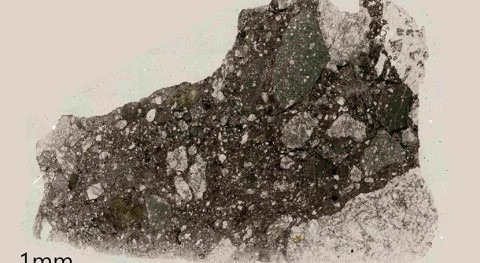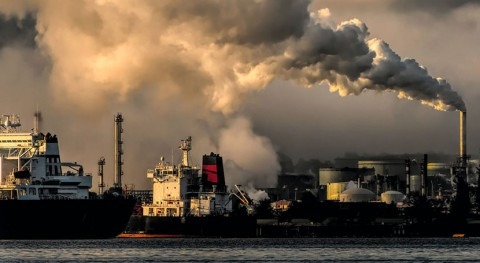Nestled in the Uinta Mountains of northern Utah, a series of pristine lakes are facing a new threat—humans. Geography professor and chair Katrina Moser led a team of researchers in the region this summer to better understand how human activity, like agriculture and warming temperatures because of climate change, is leading to dramatic changes in a water system far from populous areas.
"The most notable change is that air and water temperatures are warmer," said Moser.
"When I first started working in the region, I never took my long underwear off because it was always cold and windy and we are working in the water. This year I worked in a T-shirt."
While the lakes are changing due to human-driven climate change, Moser said they didn't expect to find that nutrients are being deposited into the lakes through the atmosphere, likely from agricultural activity.
Moser was joined by fourth-year geography student Chad Dickson who, as part of an Undergraduate Research Summer Internship, was examining the rock glaciers in the area to understand long-term climate change impacts and what is causing a dramatic transformation in the region's lakes.
Higher temperatures mean the lakes are ice-free for longer periods and the researchers are now observing changes in the thermal stability of the lakes, which in turn is changing their chemistry and biology.
The lakes were previously naturally pristine due to a lack of nutrients, but warmer temperatures and melting rock glaciers are changing that reality.
The human impact
Rock glaciers are made up of permafrost and ice locked underneath a layer of boulders and talus rock. There is evidence of microbial communities within these rock glaciers converting ammonium deposited from the air and precipitation into nitrate, which is then finding its way into the lakes.
"As temperatures increase, this previously trapped nitrate is being released in the meltwater that is flowing into adjacent lakes," said Dickson.
Over the course of two weeks, Dickson spent his days getting up early and hiking up to the lakes he was studying to collect sediment cores.
These sediment cores go deep into the bed of the lakes, producing a vertical profile that shows changes in sediment composition.
"You can basically go back in time and observe changes in the condition and dynamics of the lake throughout its history," said Dickson.
He collected cores from three lakes along with water samples to measure the nutrients flowing into the lakes. Being able to collect this data is crucial for not only protecting the lake system but understanding the impacts humans can have on remote locations.






